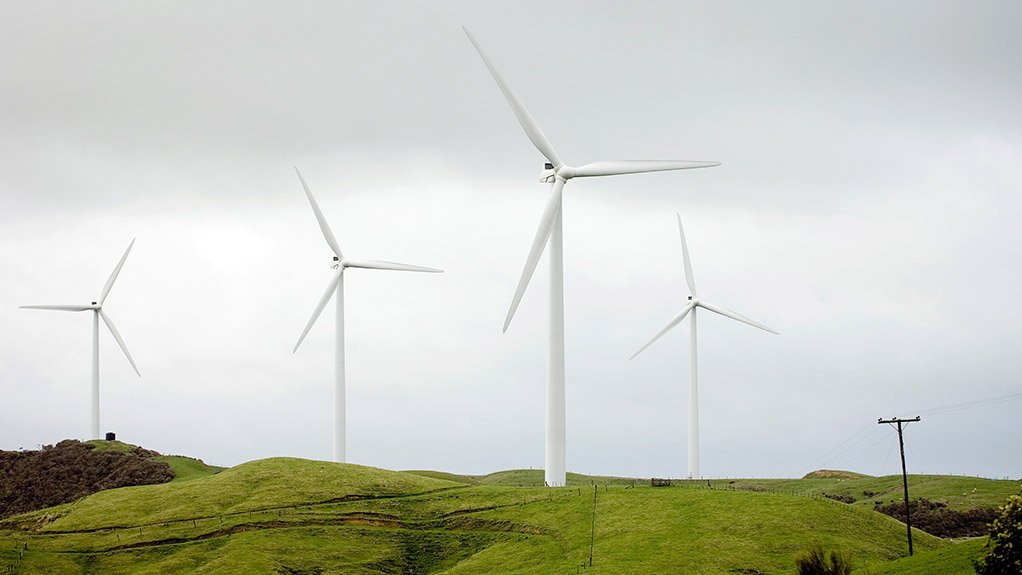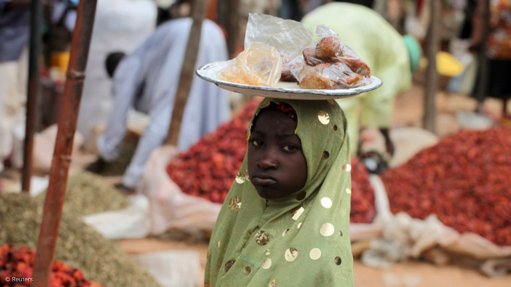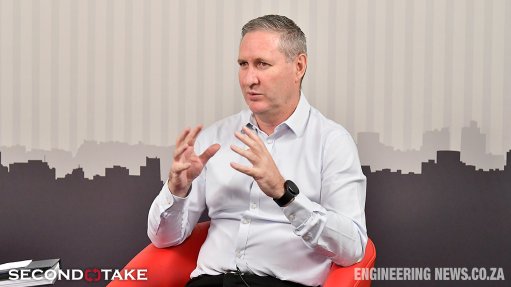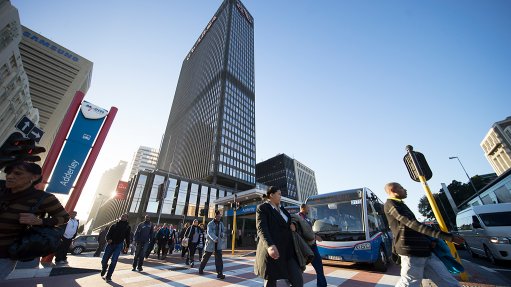Implementing energy efficiency key to saving on carbon tax



ADAM SIMCOCK Companies need to invest in energy saving projects to offset their carbon tax or claim reductions in the Section 12L of the Income Tax Act 58 of 1962
CREATING CREDIT Investing in energy efficiency projects such as wind power can create carbon emission reduction credits for future tax offsets
While great focus is placed on energy efficiency implementation, which will be a key topic at the 2014 Africa Energy Indaba, attention to carbon emissions reduction is still needed, states carbon emissions reduction auditing company Carbon Check CEO Adam Simcock.
The company will exhibit at this year’s indaba, which will take place from February 18 to 20, in Johannesburg, for the third time; Simcock will also be one of the panel members at the Carbon Management discussion.
He notes that, with the Section 12L income tax rebate, launched in November last year, and the pending implementation of the carbon tax in 2015, awareness needs to be created on how companies can financially benefit from the carbon tax and the 12L tax rebate when implementing energy efficiency.
Section 12L of the Income Tax Act, No 58 of 1962, provides an opportunity for individuals and companies to receive tax reductions in terms of energy efficiency, at 45c/kWh saved, while carbon tax, which is likely to come into effect in 2015, foc- uses on the amount of carbon emissions from companies or individuals and will be taxed at R120/t. The 12 L tax is limited to only one year of tax reductions on the energy effici- ency, while carbon reduction projects are for a minimum of ten years.
Carbon Check is the only United Nations- (UN-) accredited company in Africa, which can validate project proposals or verify whether implemented energy efficiency projects have achieved planned greenhouse-gas (GHG) emissions reductions. It also man- ages and conducts validation audits of GHG emissions quantifications.
“We hope to create a better understanding of the ways in which companies can use and benefit from the pending carbon tax implementation and the Section 12L tax rebate,” says Simcock.
While companies can implement energy efficiencies and carbon-saving projects to reduce tax liability, they can only claim for the Section 12L income tax rebate or for their reduced carbon emissions, he adds.
“These ways need to be demonstrated and understood to enable informed decision-making of choosing either carbon tax or the Section 12L tax rebate,” Simcock stresses, adding that he prefers the carbon tax reductions as a way for companies to reduce carbon emissions and simultaneously reap the financial benefits.
The Section 12L tax rebate and the carbon tax will, in effect, not only force companies to implement energy efficiency methods but will also encourage job creation, as the use of local companies in these projects could create employment. Technology transfers could also introduce new skills and technology into the energy sector, Simcock points out.
A carbon credit, or a carbon emissions reduction (CER), represents the reduction of one ton of carbon dioxide or equivalent gases and can be acquired after one year’s verification of CER by a company such as Carbon Check.
Companies could include donations made in the form of corporate social investments or Enterprise Development expenditure on carbon-saving projects to reduce carbon tax and obtain carbon credits, explains Simcock.
The Clean Development Mechanism (CDM) initiative allows developing countries, which invest in energy-saving projects, to earn CER credits and falls under the Kyoto Protocol – the international agreement that is linked to the UN’s Framework Convention on Climate Change – which sets bindings for GHG reduction targets on industrialised countries.
“If the project is monitored by the project participant and audited by a Designated Operational Entity, a certificate can be issued by the UN, demonstrating that this project has reduced carbon emissions.”
Companies can use the credit certificate in the yearly report as a tax reduction, which means they create credits, rather than pay the tax, says Simcock.
They can also use the credits for a 5% to 10% offset in the carbon tax or generate an income by selling the carbon credits, he adds.
Companies that do not necessarily invest in energy efficiency projects can still buy the carbon credits and use them to reduce tax liability, which, Simcock adds, may be the most cost-effective manner for those companies to reduce their liabilities.
He says, as carbon credits are usually generated over one year, companies need to create the energy efficiency now to gain the credits to receive future offsets. He stresses that it will be too late to implement energy efficiency in 2015, as companies will not have the benefit of the Section 12L tax rebate or the carbon tax, until 2016.
“However, the problem is that only 2.5-million tons of credits are issued in South Africa each year, which creates a significant shortfall of offsets,” says Simcock, adding that companies need to invest in projects which will reduce carbon emissions, such as landfill gas or anaerobic digestion, to generate more credits.
Although companies can use credits from the projects, the use of credits gained from renewable-energy projects, as part of the Renewable Energy Independent Power Producer Procurement Programme (REIPPPP), is still a murky issue. Although the South African government has implemented the REIPPPP to encourage these projects, Simcock says it is still unclear whether companies can use their carbon credits from large scale renewable-energy projects to offset their carbon tax liability.
Apart from creating awareness for the carbon tax liability, Simcock also aims to launch a carbon series, called Carbon Watch, which will explore the energy efficiency developments in South Africa.
As the only UN-accredited carbon emissions reduction auditor in Africa, Carbon Check is validating or verifying 26 projects at present, most of them in Africa, for the Verified Carbon Standard Gold Standard and CDM.
Simcock says that currently, there are 8 500 CDM/VCS projects in the world, of which less than a thousand are in Africa. Among the companies whose energy efficiency projects are being validated by Carbon Check is Corobrik, which is using gas ovens to bake their bricks, rather than coal-fired ovens.
Other companies include carbon advisory services and consulting company Clean Air Renewable Energy, (CDM-CARE) which is implementing cooking stoves in South Africa through CSI donations and green projects company Green Developments, which has more than 50 water-purification and cooking-efficiencies projects in Africa.
Comments
Press Office
Announcements
What's On
Subscribe to improve your user experience...
Option 1 (equivalent of R125 a month):
Receive a weekly copy of Creamer Media's Engineering News & Mining Weekly magazine
(print copy for those in South Africa and e-magazine for those outside of South Africa)
Receive daily email newsletters
Access to full search results
Access archive of magazine back copies
Access to Projects in Progress
Access to ONE Research Report of your choice in PDF format
Option 2 (equivalent of R375 a month):
All benefits from Option 1
PLUS
Access to Creamer Media's Research Channel Africa for ALL Research Reports, in PDF format, on various industrial and mining sectors
including Electricity; Water; Energy Transition; Hydrogen; Roads, Rail and Ports; Coal; Gold; Platinum; Battery Metals; etc.
Already a subscriber?
Forgotten your password?
Receive weekly copy of Creamer Media's Engineering News & Mining Weekly magazine (print copy for those in South Africa and e-magazine for those outside of South Africa)
➕
Recieve daily email newsletters
➕
Access to full search results
➕
Access archive of magazine back copies
➕
Access to Projects in Progress
➕
Access to ONE Research Report of your choice in PDF format
RESEARCH CHANNEL AFRICA
R4500 (equivalent of R375 a month)
SUBSCRIBEAll benefits from Option 1
➕
Access to Creamer Media's Research Channel Africa for ALL Research Reports on various industrial and mining sectors, in PDF format, including on:
Electricity
➕
Water
➕
Energy Transition
➕
Hydrogen
➕
Roads, Rail and Ports
➕
Coal
➕
Gold
➕
Platinum
➕
Battery Metals
➕
etc.
Receive all benefits from Option 1 or Option 2 delivered to numerous people at your company
➕
Multiple User names and Passwords for simultaneous log-ins
➕
Intranet integration access to all in your organisation




















